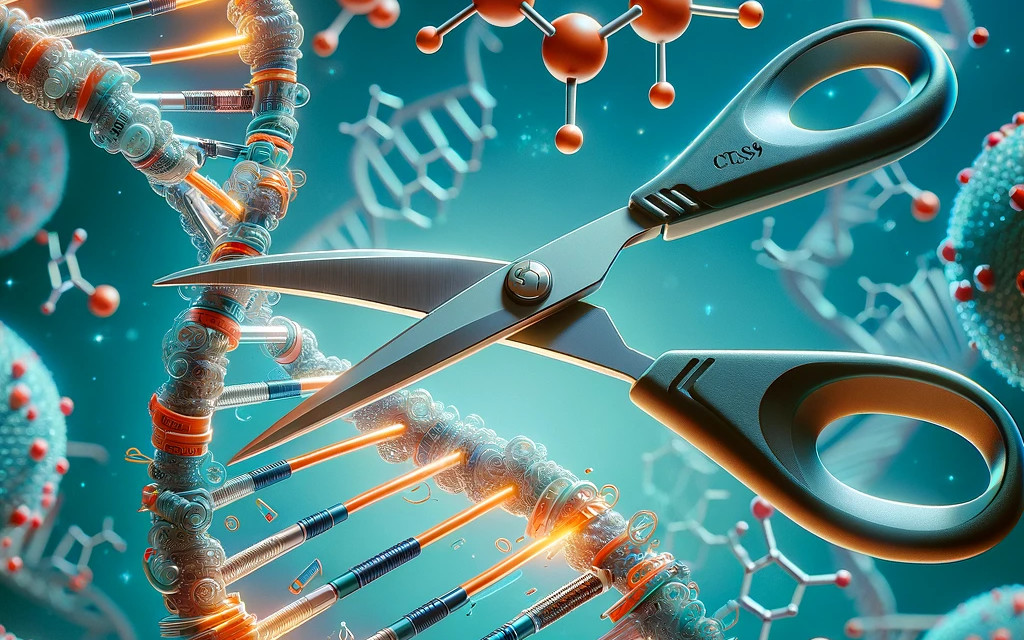Genome editing with the CRISPR method

Revolution has arrived
CRISPR gene editing is a genetic engineering technique in molecular biology that can modify the genomes of living organisms. Imagine a pair of scissors that cut in a particular part of the DNA, add a section from somewhere else, and glue it back together. Or they cut the part outright. This method is very important in biotechnologies, as it enables the editing of the genome of already living individuals, with high precision and cheaply. This opens the way to growing new crops, medicines, but also to the treatment of diseases and other genetic ailments. The CRISPR-Cas9 version allows scientists to make precise changes to the DNA of a variety of organisms, including plants, animals and humans.
The significance of the discovery is also highlighted by the fact that CRISPR-Cas9 was introduced in 2012 by a team led by Jennifer Doudna, and it won the Nobel Prize in 2020. This is an award that people wait decades to receive, and physicists often joke among themselves that one needs to have a particularly long life to win it. However, the development is not yet complete, especially since the use by humans is hindered by the fact that the method is sometimes inaccurate, and when cutting DNA, it sometimes adds unnecessary genes or, conversely, omits more than it should.
Intensive work is ongoing to achieve completely precise editing without side effects. One of the recent contributions is research led by Yan Zhang from the University of Michigan Medical School, which introduced a new type of safeguard against unwanted edits by using certain anti-CRISPR proteins in the later stages of the procedure. This increases the chances of altering only a single gene. The entire work is available at https://pubmed.ncbi.nlm.nih.gov/35051351/ .
It's already here
In February 2024, Cambridge University Hospital published the results of genetic manipulation in patients suffering from a disease called angioedema. This condition affects about 50,000 people worldwide and is characterized by the patient's face swelling at completely unexpected moments, to the extent that they cannot even open their eyes. This makes it impossible for them to perform certain professions, hobbies, and generally makes life quite difficult as these conditions are very painful.
During the trial, a small group of patients received a single dose of CRISPR targeted at liver cells. In one patient, the frequency of attacks drastically decreased. In all others, the symptoms completely subsided, possibly forever. This control group will be monitored for the next 15 years to identify any potential side effects or recurrence of the disease.
My Genome
What if you have a faulty gene that seemingly does nothing? Every day, you exercise, go to work, walk your dog. You don't smoke, only drink socially. A healthy life. But then, after the age of fifty, your faulty gene starts producing proteins that clog your system with carcinogenic substances. Within another 5 years, they will be throughout your body and begin forming tumors. Chemotherapy kills one, only for the same type to emerge in a different place a few months later.
Wouldn't it be better to replace such a gene with a healthy one in time? After all, it wasn't your fault. The faulty gene could have unintentionally arisen while you were still an embryo. Or you might have inherited it from your mother, who got it from her father. And what about your descendants, to whom you may have already passed on this gene? The faulty gene could then be transmitted down through generations. Unless you discover it during an analysis of your genetic code and get rid of it once and for all.
Source:
Nová pojistka pro revoluční „genové nůžky“ umožňuje bezpečnější editaci genomu
Gene therapy blocks painful hereditary disorder